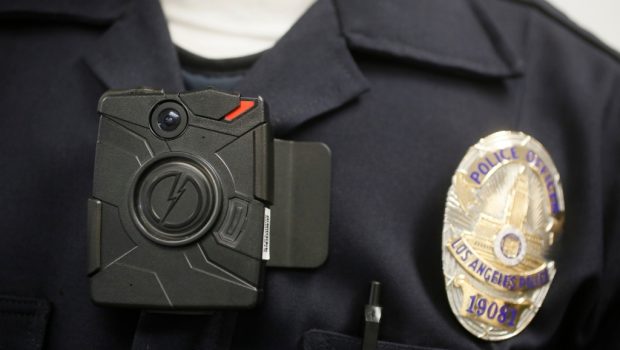Pasadena prepares for new technology, aiming to ensure more complete use of body-worn cameras – Pasadena Star News
Pasadena is preparing to implement new technology that will enhance its police department’s body-worn camera capabilities and increase transparency in situations during which an officer fires a gun.
The Signal Side Arm app will switch on all police officers’ body cameras within 20 feet of a fellow officer who unholsters a firearm, officials say, assuring that key moments of an incident are recorded for use in later investigations.
Pasadena Police Department leaders will receive an order of this equipment and other gear in the coming months, following the City Council’s approval of a five year, $1.7 million contract between the city of Pasadena and Axon Enterprise.
Department officials will also have the ability to retrieve 18 hours of video prior to an incident, tapping this new array of tools.
Mayor Victor Gordo said the agreement “opens a whole menu of options for the city’s police department.”
Interim Police Chief Cheryl Moody, who discussed the department’s plan to implement the technology with Pasadena’s Community Police Oversight Commission on Thursday, March 3, described the soon-to-be-available upgrades as “outstanding” because they will allow the department to be more transparent while investigating critical incidents.
Body cameras have been in use in Pasadena since 2016. However, Moody said, “there have been a couple of incidents in which the officer failed to even turn on their cameras.”
Currently, officers have to manually switch cameras on and off, which can be a hindrance in stressful situations, according to Moody.
Fortunately, Moody said, technology enabled by the Axon 3 cameras, such as Signal Sidearm — an app that activates all body cameras within a 20-foot radius of an officer who removes a weapon from a holster — allows Pasadena police and members of the public “an extra sense of security” knowing other cameras are turned on.
“That’s a really great feature for us and for transparency,” she said.
Highlighting how police efforts were enhanced by technology that helped lead to arrests in the killing of Jamal Patterson last year, Councilman Tyron Hampton said in a January interview, after the cameras were presented to city leadership, that he wishes the upgrades had been available earlier.
“I think if we had this technology, it would have been helpful for the events leading up to (Anthony) McClain’s shooting,” Hampton said. “This way we take out human error and ensure the officer’s camera — and all who are near them — are on so we have an idea of what exactly occurred.”
Moody said she couldn’t discuss the specifics of McClain’s shooting during the recent meeting with the Police Oversight commissioners, but she did acknowledge the technology would’ve been helpful in investigating recent violent crimes.
“Had we had these cameras on Sunnyslope, we’d have a ton of footage,” she said, “because this was almost a running gun battle so you had a lot of officers who had their weapons drawn so we would of had a lot of footage from that scene.”
Utilizing officer’s body-camera footage, in-car video footage and audio recordings, Pasadena Police Department officials ultimately pieced together an overview of last November’s shootout with a man who killed a local senior, setting off a crime spree that ended in a fatal shootout with police.
A briefing released in January provided a deeper look at the harrowing 15-minute incident that spanned a two-block area, but the PPD’s investigation into the incident is ongoing.
A one-time cost of $62,500 for the upgrades in addition to an annual cost of $32,000 for modules that would supervise performance of the department’s 295 cameras is “more than a worthy investment,” Gordo said.
“This means police no longer have to think about turning on their cameras in a life-and-death moment,” Gordo said. “They’ll respond to a call, and it’ll all be done automatically with this system,” so now the officers can focus on their job while knowing transparency will come later.
“That’s what I think is the biggest part – it’ll improve public confidence and transparency,’ Gordo added. “And that’s why it’s important to employ available technology that will improve public safety and policing in Pasadena. This will take us in the direction of doing so while we strive to improve other tools we provide officers.”
Residents agreed during a December council discussion when public callers and council members alike applauded any attempts that would increase accountability, responsibility and transparency in the city.
“It would make the public feel better about body-worn cameras if they actually did their job. So instead of saying don’t have them at all, I’m saying If you have them, let’s have them work, and let’s have them work well,” said Kat Ross, representing Standing Up for Racial Justice, Altadena-Pasadena. “It’d be great if when there was an incident, the city could produce the last 18 hours of active camera use so we could really see, as a public, the full investigation.”
The new cameras are expected to be operational by Spring, so Moody said the department is currently training officers to remember to tap their cameras.
“We try to make muscle-memory,” Moody said,” so it’s just repetitive, repetitive, repetitive training.”








Gloss